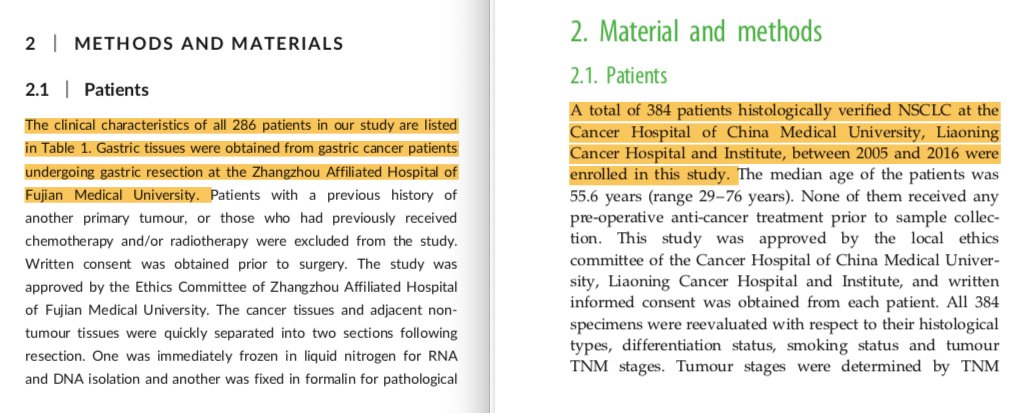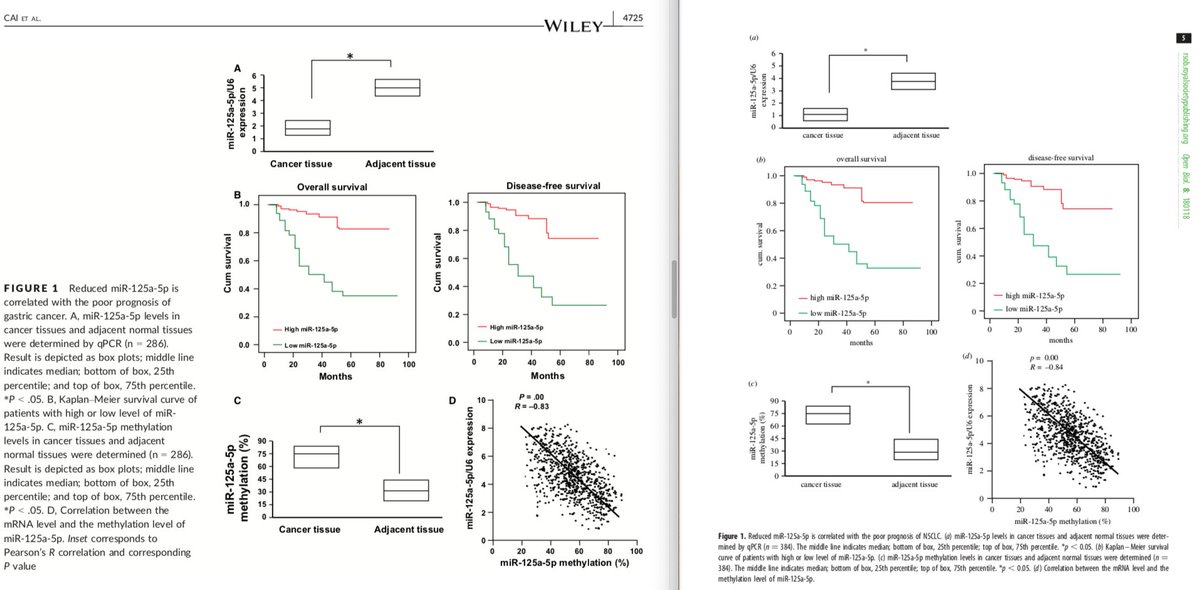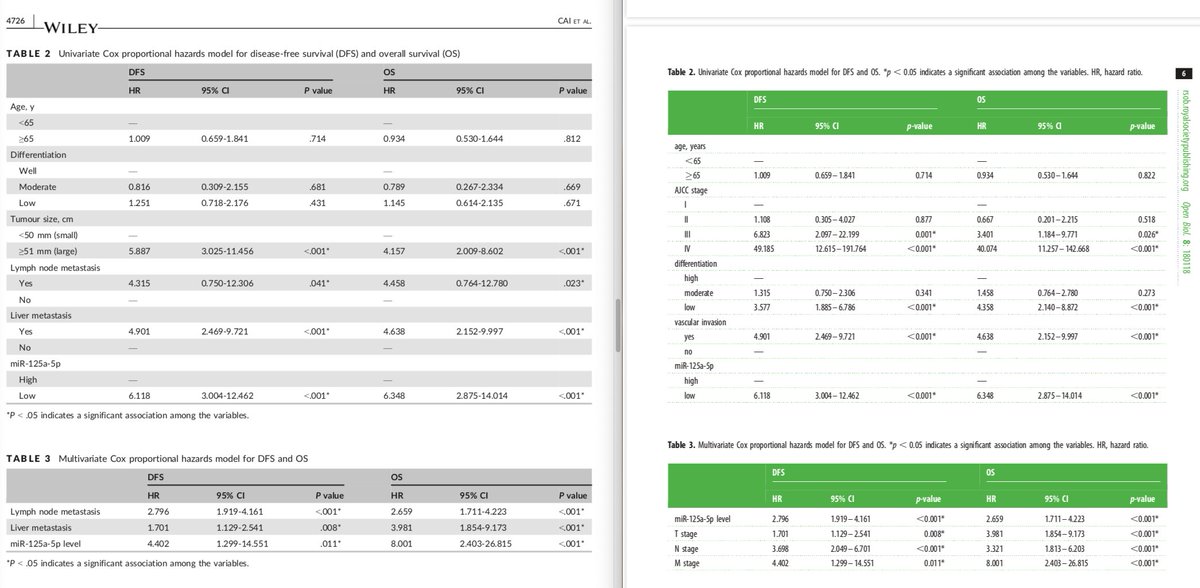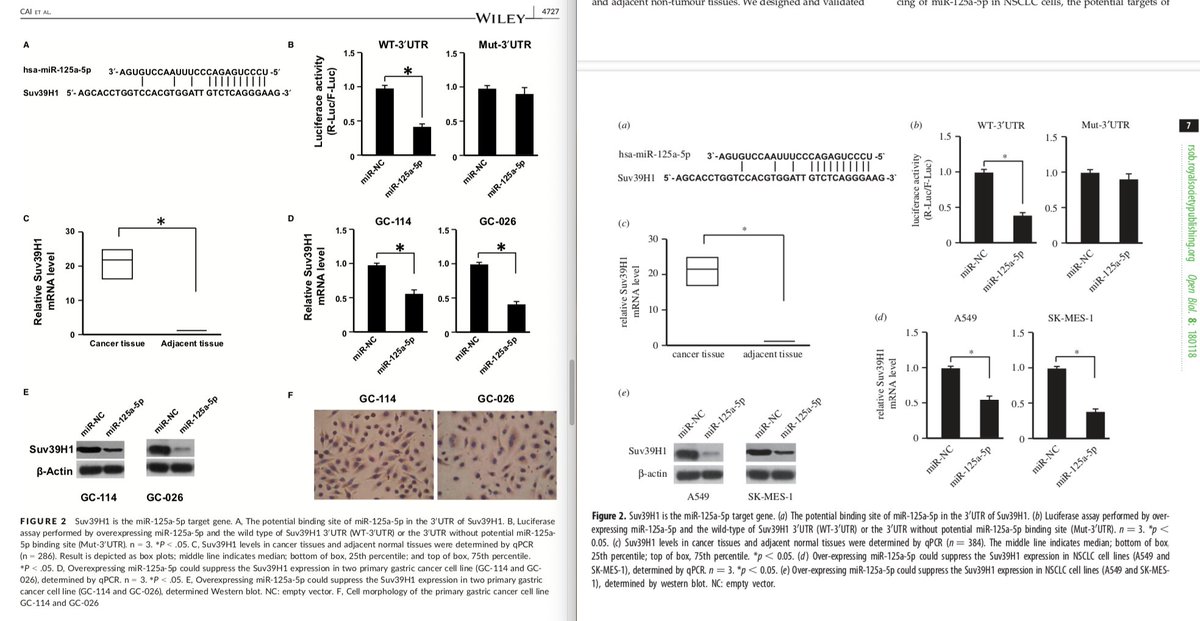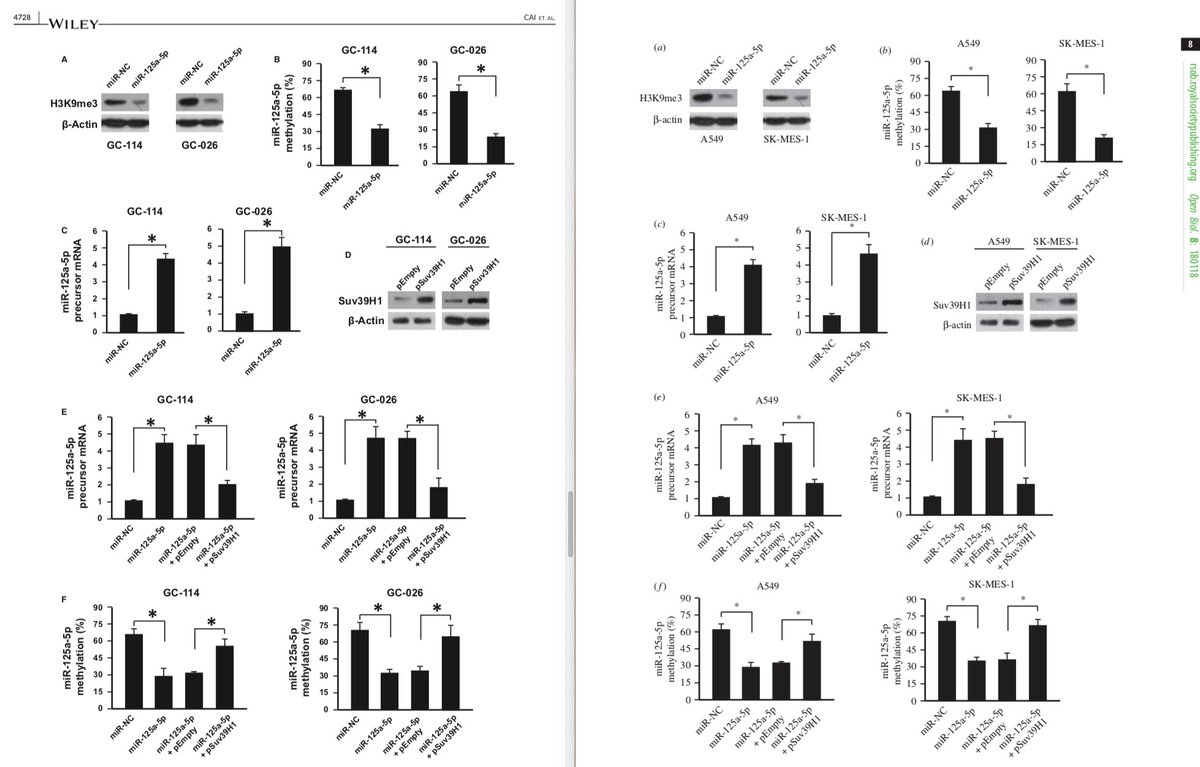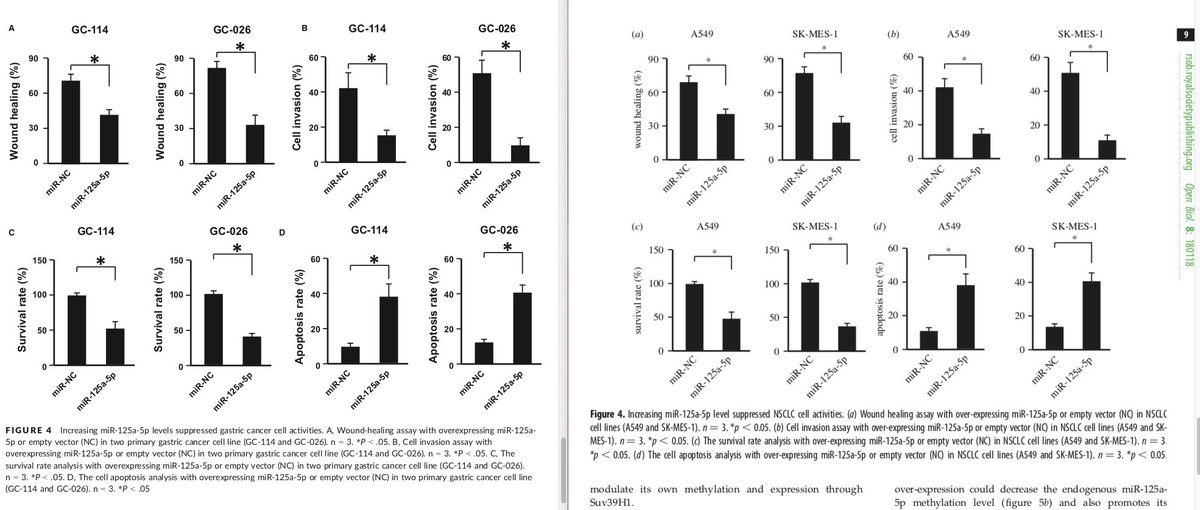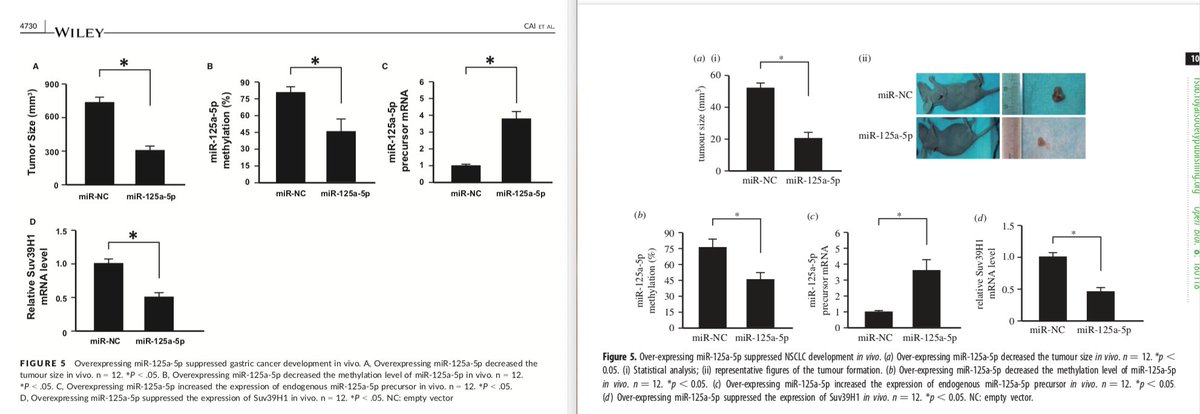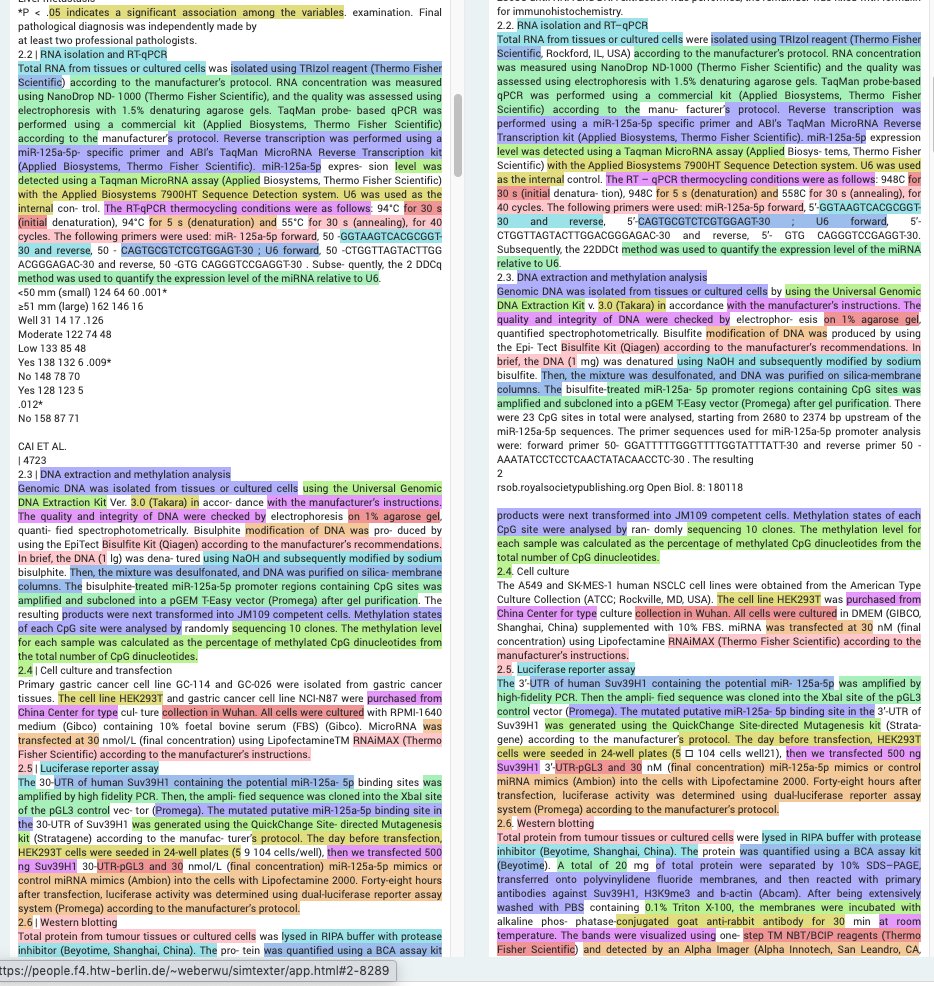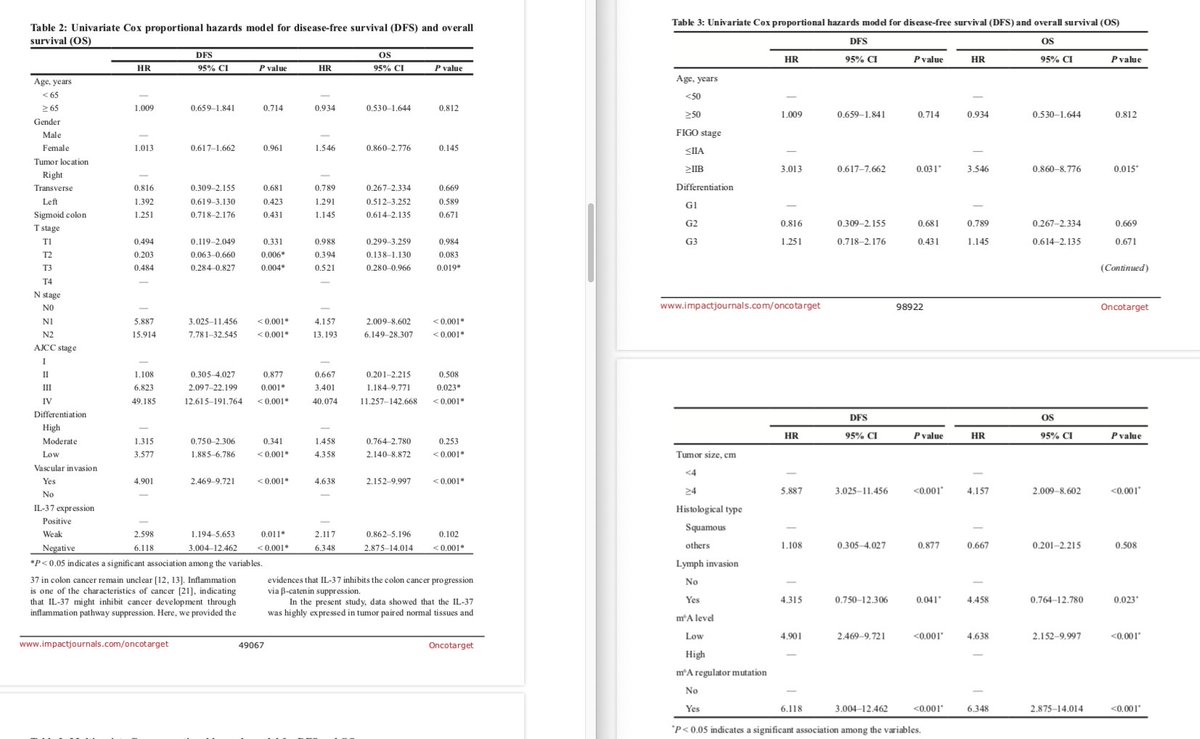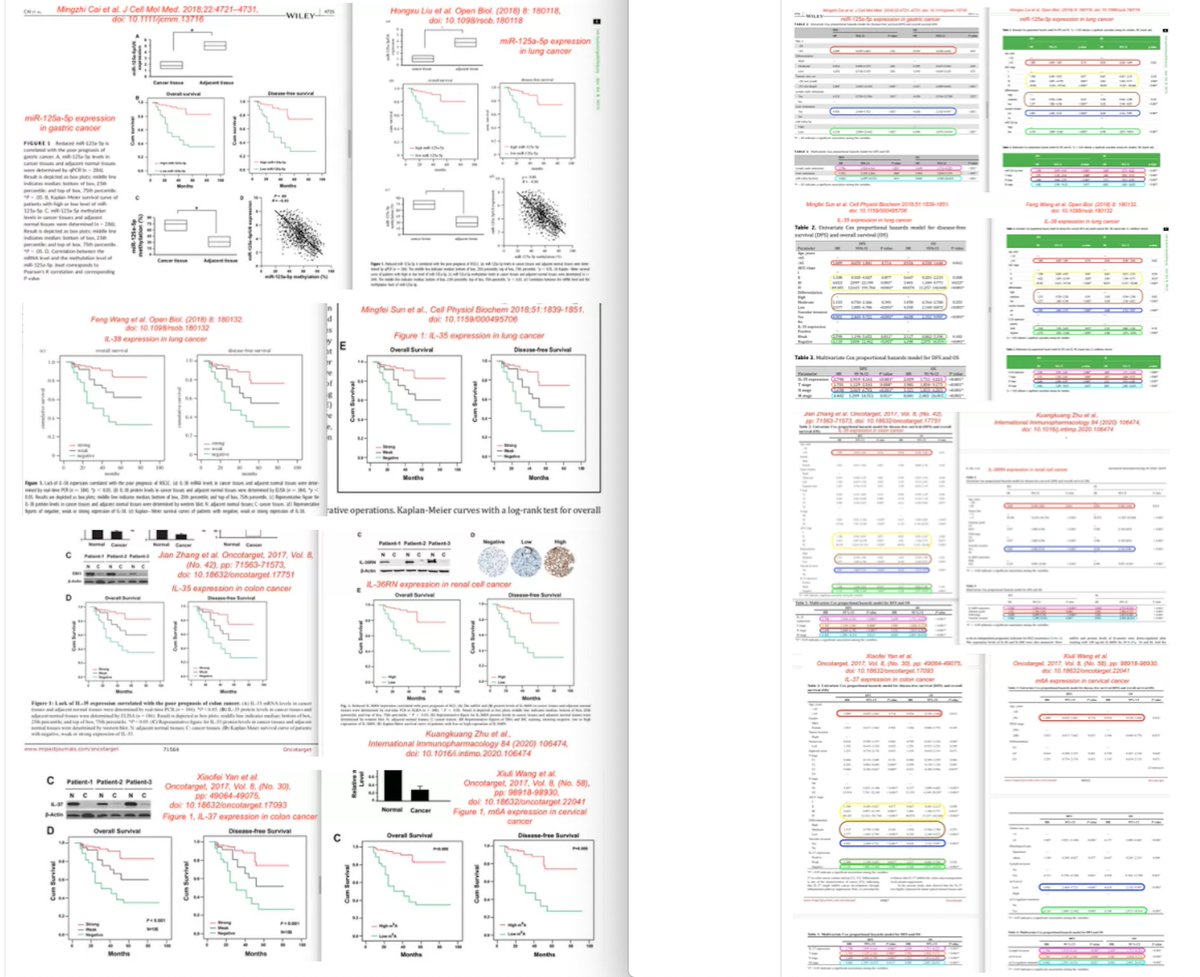Dear Tweeps, I present to you the Mysterious Case of the Two Papers With Identical Results.
In this thread, we will learn how identical results can obtained in both Gastric Cancer as well as in Lung Cancer.
HT: @nirmalya22 and @SairamJabba https://twitter.com/nirmalya22/status/1265095376924585984">https://twitter.com/nirmalya2...
In this thread, we will learn how identical results can obtained in both Gastric Cancer as well as in Lung Cancer.
HT: @nirmalya22 and @SairamJabba https://twitter.com/nirmalya22/status/1265095376924585984">https://twitter.com/nirmalya2...
Here are the two papers.
Left: role of microRNA miR-125a-5p in gastric cancer
Right: role of microRNA miR-125a-5p in lung cancer
Papers are from different sets of authors, at different institutes, published around the same time.
Left: role of microRNA miR-125a-5p in gastric cancer
Right: role of microRNA miR-125a-5p in lung cancer
Papers are from different sets of authors, at different institutes, published around the same time.
Left: recruited 286 gastric cancer patients at Zhangzhou Affiliated Hospital of Fujian Medical University.
Right: recruited 384 patients with non-small-cell lung cancer (NSCLC) at the Cancer Hospital of China Medical University, Liaoning Cancer Hospital and Institute.
Right: recruited 384 patients with non-small-cell lung cancer (NSCLC) at the Cancer Hospital of China Medical University, Liaoning Cancer Hospital and Institute.
Basic science question:
With 2 different patient groups, 2 different cancer types, and 2 different research institutes, what would be the chance that the findings would be exactly the same?
With 2 different patient groups, 2 different cancer types, and 2 different research institutes, what would be the chance that the findings would be exactly the same?
You are correct, that chance is very close to zero.
Yet, sometimes magic happens, even in science. Let& #39;s take a look at the results.
Yet, sometimes magic happens, even in science. Let& #39;s take a look at the results.
Here are the Figures 1 from both of these papers.
Pay close attention to the Kaplan-Meier survival curves in panels B) and the dot distribution in panels D).
Science IS reproducible! (*sarcasm)
Pay close attention to the Kaplan-Meier survival curves in panels B) and the dot distribution in panels D).
Science IS reproducible! (*sarcasm)
Here is a comparison between Tables 2 and 3 showing risk factors for disease survival.
Note identical numbers in e.g. "Liver metastasis" in gastric cancer (left) and "Vascular invasion" in lung cancer (right) in Tables 2.
Also note mixed up rows but same numbers in Tables 3.
Note identical numbers in e.g. "Liver metastasis" in gastric cancer (left) and "Vascular invasion" in lung cancer (right) in Tables 2.
Also note mixed up rows but same numbers in Tables 3.
Moving on to Figures 2 in both papers. Again, the graphs are remarkably similar. The Western blots are switched and represent different cell lines, and the left paper has an extra set of microscopy images, but otherwise the similarities are striking.
Figures 3 of both papers?
Unexpectedly similar (except for different cell line names and some switched/mirrored blots).
Unexpectedly similar (except for different cell line names and some switched/mirrored blots).
And Figures 5. Liu et al. (right) tossed in some mice pictures, but otherwise, these are remarkably similar.
The textual similarities are striking as well.
Generated using https://people.f4.htw-berlin.de/~weberwu/simtexter/app.html">https://people.f4.htw-berlin.de/~weberwu/...
Generated using https://people.f4.htw-berlin.de/~weberwu/simtexter/app.html">https://people.f4.htw-berlin.de/~weberwu/...
So what happened here? Did one group of authors steal the results from another group?
For that it is useful to look at manuscript submission and publication dates.
For that it is useful to look at manuscript submission and publication dates.
Left paper (gastric cancer): Manuscript received 11 March 2018, accepted 08 May 2018, published online 17 August 2018.
Right paper (lung cancer): Manuscript received 2 July 2018, accepted 3 September 2018, published online 10 October 2018.
Right paper (lung cancer): Manuscript received 2 July 2018, accepted 3 September 2018, published online 10 October 2018.
The gastric paper is definitely older (submitted first), but the lung paper was submitted before the gastric paper was published online. So it was not simply plagiarized by copying an online paper.
There are at least 2 possible scenarios:
1. The gastric paper could have been & #39;stolen& #39; during peer review
2. Both papers could have been bought from the same paper mill, which might have accidentally sold the same paper twice
1. The gastric paper could have been & #39;stolen& #39; during peer review
2. Both papers could have been bought from the same paper mill, which might have accidentally sold the same paper twice
I have no further evidence to know what happened here exactly (will report both papers, though).
But big thanks to Nirmalya Saha @nirmalya22, who brought this to my attention. Thank you for your sharp eye!
But big thanks to Nirmalya Saha @nirmalya22, who brought this to my attention. Thank you for your sharp eye!
OMG I just found 2 more papers belonging to this set, both published in 2017, but describing colon cancer and cervical. They have similar values in tables and some shared Western Blots.
Holy crap. This is getting weird. Doing this real-time, folks!
Holy crap. This is getting weird. Doing this real-time, folks!
Update!
This is a set of (at least) EIGHT papers, from different authors, different hospitals, different cancers, different protein expressions.
But with identical Kaplan-Meier curves, tables values, line graphs.
See e.g. https://pubpeer.com/publications/39A1613F4546DA16064BA441B29A0F">https://pubpeer.com/publicati...
This is a set of (at least) EIGHT papers, from different authors, different hospitals, different cancers, different protein expressions.
But with identical Kaplan-Meier curves, tables values, line graphs.
See e.g. https://pubpeer.com/publications/39A1613F4546DA16064BA441B29A0F">https://pubpeer.com/publicati...

 Read on Twitter
Read on Twitter
